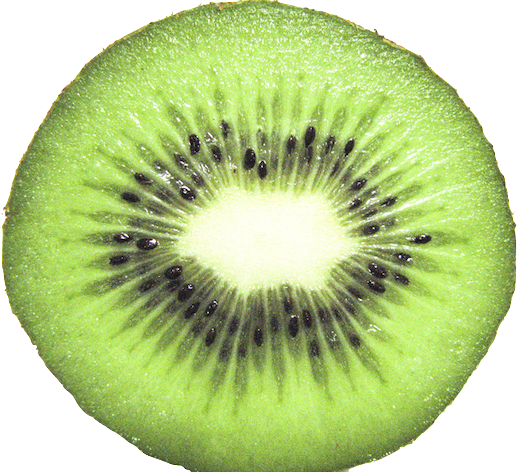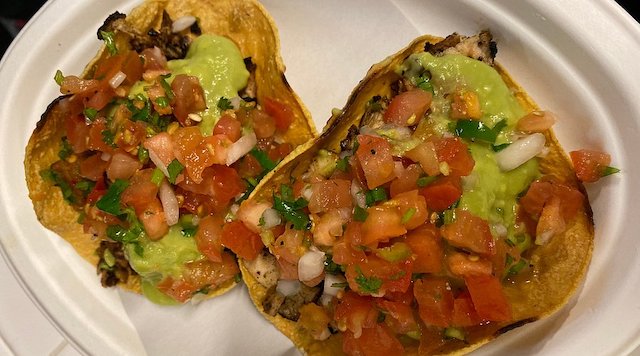9 Food Items Rich In Iron
Iron is a crucial mineral that plays a fundamental role in our overall health and well-being. It is an essential component of hemoglobin, the protein in red blood cells responsible for transporting oxygen throughout the body. Iron also supports various metabolic processes, aids in energy production, and contributes to immune function. Despite its importance, many people struggle to get enough iron from their diets. This article explores a variety of iron-rich foods, their health benefits, and practical tips for incorporating them into your daily meals to ensure you meet your iron needs.
Role of iron in the body
Iron is integral to several vital functions in the body. It is primarily involved in the formation of hemoglobin and myoglobin, a protein that carries oxygen in muscles. Adequate iron levels are essential for preventing anemia, a condition characterized by fatigue, weakness, and decreased immunity. Iron also plays a role in cellular respiration, where it helps cells convert nutrients into energy. Additionally, iron supports cognitive function and aids in maintaining a healthy immune system.
The recommended daily intake of iron varies depending on age, gender, and life stage. For instance, adult men and postmenopausal women need about 8mg of iron per day, while premenopausal women require 18 mg due to menstrual blood loss. Pregnant women have higher iron needs, with recommendations ranging from 27 to 30mg per day to support fetal development and increased blood volume.
Top iron-rich foods to include in your diet
Incorporating iron-rich foods into your diet is crucial for maintaining optimal iron levels. Here are some of the best sources of iron:
1) Red meat
Red meat is a well-known source of heme iron, the type of iron that is more readily absorbed by the body compared to non-heme iron found in plant-based sources. Beef, lamb, and pork are excellent options. A 3-ounce serving of cooked beef provides approximately 2.1 mg of iron. Opt for lean cuts to reduce saturated fat intake, and consider incorporating red meat into your diet a few times a week to boost your iron levels.
2) Poultry
Poultry, such as chicken and turkey, also provides heme iron, though in slightly lower amounts compared to red meat. A 3-ounce serving of cooked chicken breast offers about 1.0 mg of iron. Including poultry in your diet is a great way to diversify your sources of iron while also benefiting from high-quality protein.
3) Seafood
Many types of seafood are rich in heme iron, making them an excellent choice for those looking to increase their iron intake. Shellfish such as clams, oysters, and mussels are particularly high in iron. For example, a 3-ounce serving of cooked clams contains about 23.8 mg of iron, far surpassing the daily recommended intake. Fish like sardines and tuna also contribute to your iron needs, with sardines offering about 2.5 mg of iron per 3-ounce serving.
4) Legumes
Legumes, including lentils, chickpeas, and beans, are excellent sources of non-heme iron. They are especially important for vegetarians and vegans who do not consume animal products. A cup of cooked lentils contains approximately 6.6 mg of iron, while a cup of cooked chickpeas provides around 4.7 mg. Beans, such as black beans and kidney beans, also contribute significant amounts of iron. Additionally, legumes are rich in fiber, protein, and other essential nutrients.
5) Dark Leafy Greens
Dark leafy greens are another valuable source of non-heme iron. Spinach, kale, and Swiss chard are particularly high in iron. A cup of cooked spinach contains about 6.4 mg of iron. These vegetables are also packed with vitamins A, C, and K, as well as antioxidants that support overall health. Including a variety of leafy greens in your diet can help you meet your iron needs while providing additional health benefits.
6) Fortified foods
Many foods are fortified with iron to help individuals meet their daily requirements, especially those who may have dietary restrictions. Breakfast cereals, bread, and plant-based milk alternatives are often enriched with iron. For instance, a serving of fortified breakfast cereal can provide up to 18 mg of iron, depending on the brand. Checking food labels can help you identify fortified products and ensure you are getting sufficient iron from these sources.
7) Nuts and seeds
Nuts and seeds are another great source of non-heme iron. Pumpkin seeds, sesame seeds, and hemp seeds are particularly rich in iron. A 1-ounce serving of pumpkin seeds provides approximately 2.5 mg of iron. Nuts such as cashews and almonds also contribute to your iron intake, with cashews offering about 1.9 mg of iron per ounce. Including a handful of nuts or seeds in your snacks or meals can help boost your iron levels.
8) Tofu and tempeh
Tofu and tempeh, made from soybeans, are excellent sources of non-heme iron and are particularly beneficial for those following a plant-based diet. A half-cup serving of tofu provides about 3.4 mg of iron, while a similar serving of tempeh offers around 2.7 mg. Both tofu and tempeh are versatile ingredients that can be used in a variety of dishes, making it easy to increase your iron intake.
9) Dried fruits
Dried fruits such as apricots, figs, and raisins offer a convenient and tasty way to add iron to your diet. A quarter-cup of dried apricots contains about 1.7 mg of iron, while the same amount of dried figs provides around 1.3 mg. Dried fruits are also a good source of fiber and antioxidants, making them a nutritious addition to your diet.
Enhancing iron absorption
While consuming iron-rich foods is essential, optimizing iron absorption can help you make the most of your dietary intake. Here are some tips to enhance iron absorption:
1) Pair iron with vitamin C
Vitamin C significantly enhances the absorption of non-heme iron from plant-based sources. Consuming foods rich in vitamin C, such as citrus fruits, bell peppers, and tomatoes, alongside iron-rich foods can improve absorption. For example, adding a side of orange slices or a bell pepper salad to a meal containing beans or spinach can boost iron uptake.
2) Avoid calcium-rich foods at iron-rich meals
Calcium competes with iron for absorption in the intestines. To maximize iron absorption, try to avoid consuming calcium-rich foods or supplements at the same time as iron-rich meals. Instead, space out calcium and iron intake by several hours if possible.
3) Cook with cast iron cookware
Cooking with cast iron cookware can increase the iron content of your food. When acidic foods, such as tomatoes, are cooked in cast iron pots and pans, small amounts of iron are transferred to the food, boosting its iron content. This can be a simple and effective way to increase your dietary iron intake.
4) Limit intake of Iron inhibitors
Certain substances can inhibit iron absorption, including polyphenols found in tea and coffee, as well as certain whole grains and legumes containing phytates. While it’s not necessary to eliminate these foods from your diet, consuming them separately from iron-rich meals can help optimise iron absorption.
Meeting iron needs across different life stages
Iron requirements can vary depending on age, gender, and life stage:
1) Children and adolescents
Growing children and teenagers have increased iron needs to support their development and growth. Iron-rich foods should be included in their diets to prevent iron deficiency anemia, which is common in this age group. Ensuring adequate iron intake during these years is crucial for overall health and development.
2) Pregnant women
Pregnant women require higher iron levels to support fetal development and increased blood volume. The recommended daily intake of iron during pregnancy is approximately 27 mg. Consuming iron-rich foods and considering prenatal iron supplements, as advised by a healthcare provider, can help meet these increased needs.
3) Older adults
Older adults may also need to pay attention to their iron intake, especially if they have dietary restrictions or chronic health conditions. Ensuring sufficient iron intake through a balanced diet can help prevent anemia and support overall health. Consulting with a healthcare provider can help determine if additional iron supplementation is necessary.
Incorporating iron-rich foods into your diet
To effectively boost your iron intake, consider the following practical tips:
1) Plan balanced meals
Aim to include a variety of iron-rich foods in your meals. Combine sources of heme iron with non-heme iron sources to maximise iron intake. Incorporate vitamin C-rich foods to enhance absorption and create well-rounded, nutritious meals.
2) Prepare iron-rich snacks
Snacks can also be an opportunity to boost your iron intake. Consider options like trail mix with nuts and seeds, dried fruit, or whole-grain crackers with hummus. These snacks are not only convenient but also provide a tasty way to increase your iron consumption.
3) Experiment with recipes
Explore new recipes that feature iron-rich ingredients. Try making lentil soups, chickpea salads, or tofu stir-fries. Discovering creative ways to prepare and enjoy iron-rich foods can make it easier to maintain a diet that supports your iron needs.
4) Monitor your iron levels
Regularly monitoring your iron levels through blood tests can help you assess whether you are meeting your iron needs. If you experience symptoms of iron deficiency or have specific dietary concerns, consult with a healthcare provider to address any potential issues and receive personalised recommendations.
Numerous health aspects
Iron is a vital mineral that supports numerous aspects of health, from oxygen transport to energy production and immune function. By incorporating a variety of iron-rich foods into your diet, including red meat, poultry, seafood, legumes, leafy greens, fortified foods, nuts, seeds, tofu, and dried fruits, you can effectively meet your daily iron needs and promote overall well-being.
Understanding the importance of iron and implementing strategies to enhance absorption can help you make the most of your dietary intake. Whether you are a meat-eater, vegetarian, or vegan, focusing on diverse sources of iron and following practical tips for optimizing absorption can support your health and prevent deficiencies.
Embrace the variety of iron-rich foods available and make informed choices to ensure you maintain optimal iron levels and enjoy a balanced, nutritious diet.



